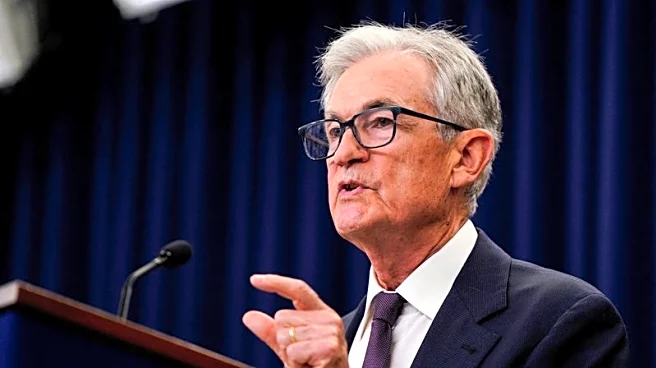What's Happening?
Federal Reserve Chair Jerome Powell has indicated that the central bank's quantitative tightening (QT) process, aimed at reducing its balance sheet, may be nearing its conclusion. This process, which began in 2022, involves allowing a set amount of bonds to mature without replacement, thereby shrinking the Fed's holdings from $9 trillion to $6.6 trillion. Powell noted that liquidity conditions are gradually tightening, evidenced by firming repo rates and temporary pressures on selected dates. The Fed's reverse repo facility, which helps manage short-term rates, has seen usage drop to near-zero, suggesting that QT is effectively lowering reserves. Powell emphasized the effectiveness of the Fed's ample reserves regime in supporting economic and financial stability.
Why It's Important?
The potential end of the QT process is significant for financial markets and the broader economy. As the Fed reduces its balance sheet, liquidity scarcity could emerge, potentially complicating the Fed's ability to maintain its monetary policy interest rate target. This could lead to increased volatility in money markets. The Fed's balance sheet management has been controversial, with critics arguing it distorts financial markets. Treasury Secretary Scott Bessent has accused the Fed of mission creep, while others have raised concerns about the Fed's interest rate management tools, which have resulted in substantial payouts to financial firms. Powell cautioned against removing the Fed's interest-paying powers, warning that such a move could lead to significant stress in financial markets.
What's Next?
The Fed is closely monitoring a range of indicators to determine the appropriate timing for ending QT. While some officials believe there is still ample liquidity in the financial system, the Fed must balance the need to shrink its holdings with the risk of unsettling money markets. Powell did not specify how far the Fed would shrink its holdings, but a survey of financial institutions projected a January 2026 end-date for QT, with the balance sheet size at $6.2 trillion. The Fed's ability to manage interest rates effectively will be crucial in maintaining financial stability as it navigates the end of QT.
Beyond the Headlines
The Fed's approach to balance sheet management and interest rate control has broader implications for monetary policy and financial stability. The use of the balance sheet as a policy tool has sparked debate about the central bank's role in the economy. The Fed's ability to adapt its tools and strategies in response to changing economic conditions will be critical in ensuring long-term stability. As the Fed moves towards the end of QT, it must consider the potential impact on market liquidity and the broader financial system.












